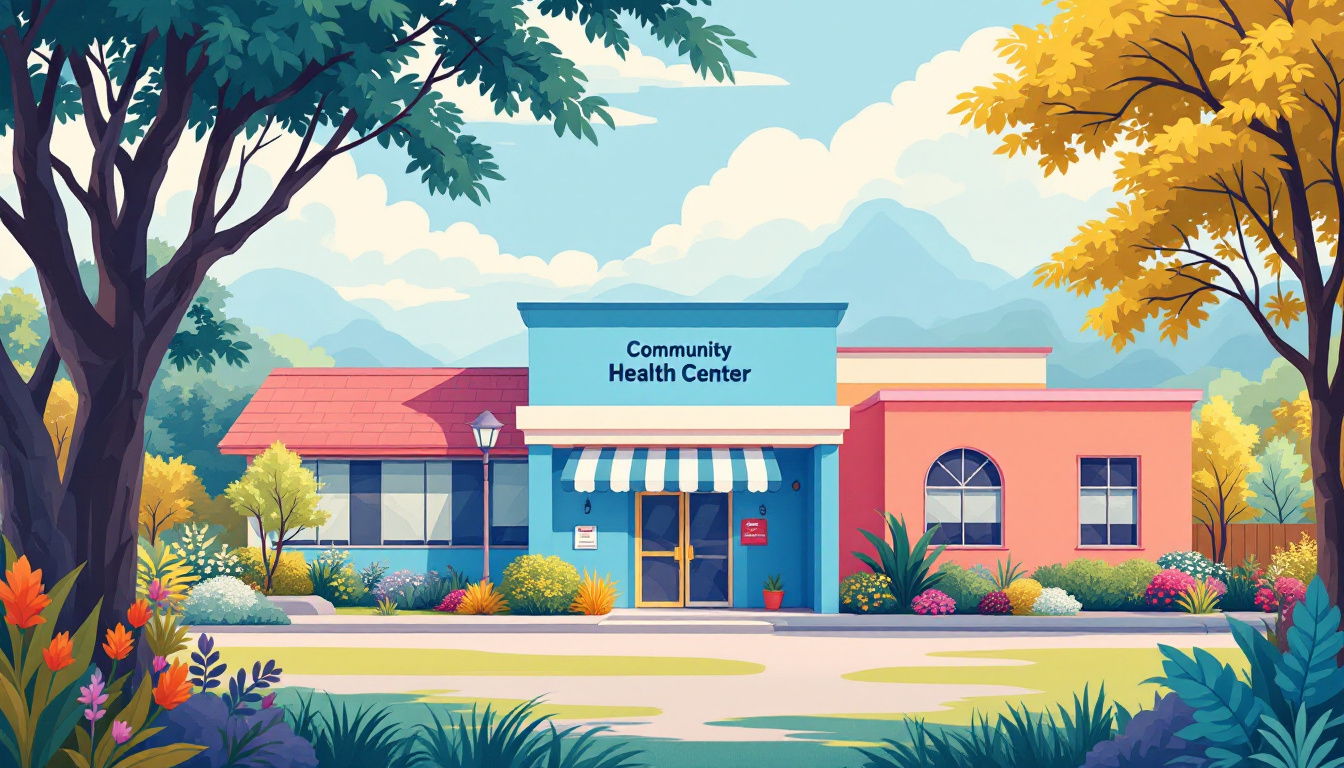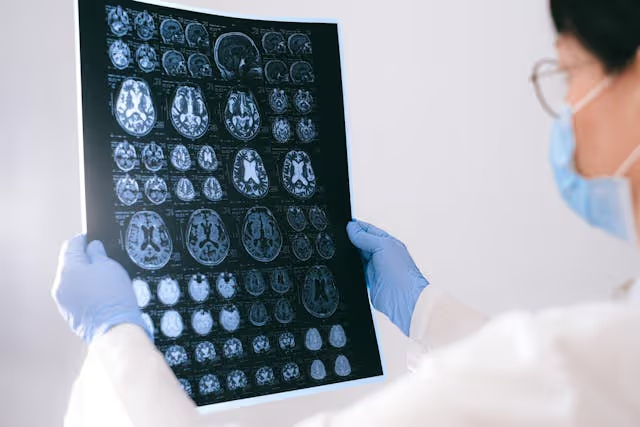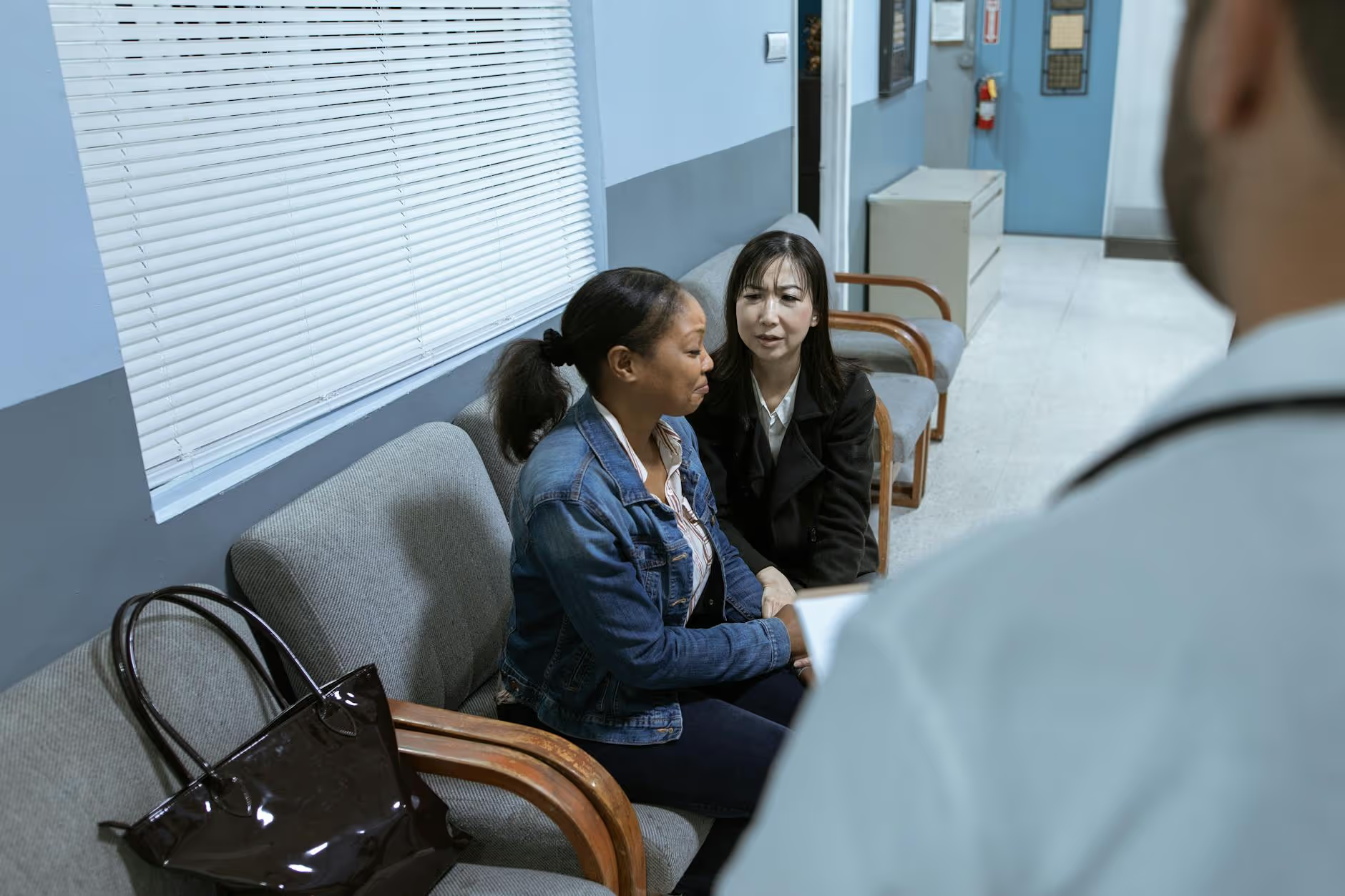Strategies for improving communication between patients and providers
February 23, 2025
Enhancing Patient-Provider Communication: Evidence-Based Approaches and Best Practices


Introduction
Effective communication is the cornerstone of quality healthcare, ensuring that patients receive the understanding, care, and engagement they need to achieve optimal health outcomes. This article explores strategies to enhance communication in healthcare settings, addressing various barriers and providing insight into best practices for both providers and patients.
Understanding the Importance of Communication in Healthcare

Impact of communication on patient outcomes
Effective communication plays a pivotal role in enhancing patient outcomes in healthcare. When information is conveyed clearly and empathetically, patients are better equipped to understand their conditions and treatment options. This leads to informed decision-making, greater adherence to treatment regimens, and overall satisfaction with care. Studies have shown that hospitals rated highly for communication have lower rates of adverse events, indicating that clear dialogue can directly translate into improved safety and health results.
Role of communication in preventing medical errors and improving patient safety
Miscommunication can lead to significant medical errors, making effective patient-provider communication vital for patient safety. When healthcare providers actively engage with patients using plain language and avoid medical jargon, patients can better understand their instructions—reducing the likelihood of mistakes. Mechanisms such as the teach-back method ensure that patients truly comprehend their care instructions, preventing misunderstandings that can have serious consequences. Additionally, open communication channels, such as patient portals, enhance ongoing dialogue, allowing for timely clarification and reducing the risk of errors. Ultimately, prioritizing communication strategies is essential for ensuring patient safety and delivering high-quality care.
Best Practices for Improving Communication

What are some best practices for improving patient-provider communication?
Improving patient-provider communication is essential for enhancing healthcare outcomes and patient satisfaction. Here are several best practices:
Assess Health Literacy: Provide educational materials tailored to patient literacy levels, ideally at a 5th to 8th-grade reading level. Offer these materials in multiple languages to accommodate diverse patient populations.
Overcome Language Barriers: Hire bilingual staff or employ interpreters to assist non-English speaking patients. This enhances understanding and creates a more inclusive healthcare environment.
Employ Soft Skills: Use empathy and active listening techniques to foster a supportive dialogue. This encourages patients to share concerns and ask questions, ultimately enhancing their experience.
Engage in Shared Decision-Making: Encourage collaboration by discussing treatment options with patients, considering their preferences and understanding their financial constraints.
Leverage Technology: Utilize patient engagement technologies, like secure messaging through patient portals. These tools facilitate continuous communication, empowering patients to manage their health more actively.
Implement Effective Discharge Planning: Clear instructions and follow-up care planning can prepare patients for home care while reducing readmission rates, ensuring they understand their treatment plans.
Cultivate a Culture of Safety: Creating an environment where healthcare staff feel safe to communicate openly can lead to better quality of care for patients.
By implementing these best practices, healthcare providers can significantly improve patient-provider communication, leading to better healthcare outcomes.
Types of Communication in Healthcare

What are the different types of communication used in healthcare?
In healthcare, communication occurs in several key forms: verbal, non-verbal, written, electronic, and interpersonal.
Verbal Communication: This involves direct conversations and discussions between healthcare providers and patients. Clear articulation helps patients understand their conditions and treatment options effectively.
Non-Verbal Communication: Body language, eye contact, and facial expressions convey empathy and attentiveness. Research indicates that strong non-verbal cues can significantly enhance the trust and rapport between patients and providers.
Written Communication: Essential for documentation and continuity of care, written communication includes patient education materials, care plans, and discharge instructions, which reinforce verbal communications.
Electronic Communication: With the rise of technology, electronic methods like telehealth, patient portals, and secure messaging enable timely interactions, improving accessibility and efficiency for both patients and healthcare professionals.
Interpersonal Communication: Engaging patients through shared decision-making and active listening promotes a participatory approach to care. Asking open-ended questions encourages dialogue, helping to uncover patient concerns and facilitate informed health choices.
Effective communication among team members is vital for coordinated patient care and minimizing errors, as approximately 27% of medical errors stem from poor communication. Ultimately, strong communication fosters trust between patients and providers, leading to better health outcomes and patient satisfaction.
Enhancing Patient Satisfaction and Care Through Communication

How can healthcare providers improve communication with patients to enhance satisfaction and care?
Healthcare providers can significantly improve communication with patients by adopting patient-centered interviewing techniques. This approach encourages both parties to engage equally, fostering a sense of partnership that enhances patient satisfaction and care quality. Patients who feel actively involved in their healthcare decision-making tend to be more satisfied and compliant with treatment regimens.
Using structured communication models like AIDET (Acknowledge, Introduce, Duration, Explanation, Thank you) helps streamline interactions. This model not only organizes the conversation but also ensures that patients feel acknowledged and valued throughout their experience. Similarly, the RESPECT model focuses on developing rapport, demonstrating empathy, and being aware of cultural variances. These elements are crucial in creating a trustworthy environment where patients feel safe to express concerns and ask questions.
Incorporating shared decision-making transforms the patient-provider dynamic, leading to informed and engaged patients. Leveraging technology, such as patient portals for secure communication, enhances interaction while upholding patient privacy. By prioritizing these strategies, healthcare providers can not only boost patient satisfaction but also lead to better health outcomes, reinforcing the importance of effective communication in clinical practice.
Strategies for Communicating with Hearing-impaired Patients
What strategies should healthcare professionals use to communicate with patients who have hearing impairments?
Healthcare professionals need a set of effective communication strategies tailored for patients with hearing impairments. Start by speaking clearly and at a normal volume. It is essential not to shout, as this can distort speech rather than clarify it. Always gain the patient's attention before speaking, which might involve a gentle touch on the arm or waving to them from a distance.
Tips for Creating an Optimal Communication Environment
Conversations should take place in quiet, well-lit settings. This helps minimize background noise, which can interfere with hearing aids or normal hearing. Proper lighting assists patients who rely on lip reading by making visual cues easier to see.
Maintain an appropriate distance of 3-6 feet when speaking. This distance allows for natural eye contact while ensuring that the patient can read lips effectively. If misunderstanding occurs, rephrasing your message can make a significant difference. Incorporating pauses and allowing breaks during discussions also helps alleviate frustration.
Utilizing Assistive Technologies
Incorporating assistive technologies can reinforce communication efforts. Tools such as video captions or digital tablets with written messages can bridge gaps in understanding. These measures empower hearing-impaired patients to engage actively in their care discussions, leading to better health outcomes.
Role of the 5 C's in Effective Medical Communication
What are the 5 C's of communication in the medical field, and how are they applied?
The 5 C's of communication in the medical field are Contact, Communicate, Core Question, Collaborate, and Close the Loop. These five principles serve as a framework for effective communication, especially in high-pressure environments such as Emergency Medicine. By adhering to this model, healthcare providers can significantly enhance their interactions with patients and among themselves.
In practice, this model is implemented by first establishing Contact with the patient, making them feel heard and acknowledged. Next, providers need to Communicate clearly about the patient's condition, utilizing plain language to avoid jargon. This leads to the identification of the Core Question, pinpointing the patient’s main concerns. Collaboration involves engaging the patient in their care decisions, fostering a partnership model. Finally, it's vital to Close the Loop by confirming understanding and ensuring that all concerns have been addressed, which reinforces trust and clarity.
Impact on communication proficiency
Training programs focused on the 5 C's have shown remarkable impacts on communication proficiency among healthcare professionals. For example, a study conducted with medical students at eight large academic medical centers reported significant improvements in their communication assessments after receiving training based on this model. The use of the 5 C's not only bolstered students' confidence but also equipped them with the competence necessary for effective consultations.
Improved communication skills are essential in high-stakes situations, leading to better patient outcomes, enhanced satisfaction, and reduced risks of misunderstandings. By consistently applying the 5 C's model, healthcare organizations can cultivate a culture of open communication, fostering better relationships between providers and patients.
The Role of Technology in Patient Communication
Patient portals and digital tools
Patient portals have emerged as a vital tool in enhancing patient-provider communication. These secure platforms allow for two-way messaging, enabling patients to ask questions and receive clarifications about their health at their convenience. Features such as appointment scheduling, access to medical records, and educational resources promote patient engagement and empower individuals to take control of their health.
In addition, these portals facilitate the sharing of treatment plans and results, reinforcing understanding and adherence to medical advice. Research indicates that patients using these portals have reported increased satisfaction with their care, highlighting the value of accessible digital communication.
Impact of telehealth on communication
Telehealth has revolutionized the way healthcare providers communicate with patients. It offers an alternative for consultations, especially for those who cannot visit in person, providing increased flexibility in healthcare delivery. However, it requires a different set of communication skills; maintaining eye contact through a screen and actively engaging patients digitally are key.
Research shows that telehealth can enhance patient involvement in their healthcare decisions. By promoting clear messaging and personalizing the interaction, providers can foster a connection that mirrors in-person visits, thus sustaining rapport and encouraging engagement throughout treatment.
Overcoming Barriers to Effective Communication

Addressing Literacy and Cultural Barriers
Barriers to effective communication in healthcare often arise from patients' varying levels of literacy and cultural backgrounds. Health literacy is crucial, as individuals with low health literacy face increased risks of poor health outcomes. To address this, healthcare organizations can implement educational programs tailored to different literacy levels and utilize resources like visual aids and pamphlets.
Cultural competency is essential for bridging communication gaps. Healthcare providers must understand and respect the diverse backgrounds of their patients. Hiring interpreters and employing multilingual staff can significantly enhance communication with non-English speaking patients, fostering a more inclusive healthcare environment.
Implementing Standardized Communication Protocols
Standardized communication protocols are vital in enhancing clarity and reducing misunderstandings. Frameworks like the SBAR (Situation-Background-Assessment-Recommendation) strategy facilitate effective exchanges between healthcare professionals, ensuring that important information is conveyed accurately.
Furthermore, adopting the teach-back method can improve comprehension by prompting patients to repeat information in their own words, reinforcing their understanding of medical instructions. Regular training sessions focused on communication skills for healthcare providers ensure these protocols are followed, ultimately leading to improved patient outcomes and satisfaction.
The Impact of Communication on Patient Outcomes
Studies Linking Communication to Medical Error Reduction
Effective communication between healthcare providers and patients is crucial for reducing medical errors. Research demonstrates that hospitals with higher ratings for provider-patient communication report lower occurrences of adverse safety events, such as bedsores. These studies emphasize the correlation between clear communication and improved patient safety, highlighting that when patients understand their treatment plans and adhere to them, the likelihood of complications diminishes.
Patient Feedback and Satisfaction Improvements
Patient satisfaction can significantly improve through open channels of communication. Engaging patients in discussions about their health conditions, preferences, and treatment options fosters a collaborative environment. For instance, employing strategies like shared decision-making not only enhances patient understanding but also leads to increased satisfaction. Surveys reveal that many patients desire more proactive communication from healthcare providers, underscoring the importance of maintaining continuous dialogue in clinical settings. Clear, compassionate communication reassures patients, establishing trust and stronger healthcare relationships.
Communication Strategies for Specific Populations
Tailored Strategies for Older Adults
Older patients often encounter unique communication barriers stemming from age-related cognitive and perceptual changes. To enhance interactions:
- Use Clear Language: Avoid medical jargon, ensuring explanations are straightforward.
- Incorporate Visual Aids: Diagrams and illustrations can significantly improve understanding and retention.
- Engage in Active Listening: Focus on attentively listening to concerns without interruptions, which fosters trust and helps address their specific needs.
- Allow Extra Time: Be patient and give older adults ample time to process information and respond.
Culturally Competent Communication Measures
Effective communication in healthcare must adapt to diverse cultural backgrounds. Implementation includes:
- Understanding Cultural Context: Recognize how cultural beliefs might affect healthcare perceptions and practices.
- Hiring Bilingual Staff and Interpreters: To bridge language gaps, organizations should employ linguistically diverse personnel.
- Utilize the RESPECT Model: This framework emphasizes empathy, partnership, and trust, crucial for building rapport with patients from varied backgrounds.
- Tailored Educational Materials: Providing patient education resources in multiple languages can greatly enhance comprehension and adherence.
By addressing these aspects, healthcare providers can promote effective communication, leading to improved patient outcomes.
Training and Skill Development in Healthcare Communication
Importance of training for healthcare professionals
Effective communication is crucial in healthcare, as it directly influences patient engagement, satisfaction, and outcomes. However, traditional medical education often lacks sufficient focus on communication skills. Therefore, ongoing training in communication techniques for healthcare professionals is essential. Regular courses can improve not just verbal interactions but also enhance active listening and empathy, fostering an environment where patients feel heard and valued.
Furthermore, specific strategies such as the AIDET framework (Acknowledge, Introduce, Duration, Explanation, Thank You) and the RESPECT model (Rapport, Empathy, Support, Partnership, Explanations, Cultural Competence, Trust) help create strong patient-provider relationships. Using these models in training ensures that healthcare professionals are equipped to handle diverse patient needs and preferences effectively.
Regular evaluation of communication effectiveness
Routine evaluation of communication practices is vital to identify barriers and areas for improvement. Healthcare organizations should assess methods, gather patient feedback through surveys, and monitor the outcomes of communication interventions. By assessing these strategies, organizations can ensure training remains relevant and effective.
Additionally, establishing standardized communication protocols, like using the SBAR (Situation-Background-Assessment-Recommendation) framework, can help improve clarity and reduce miscommunication. Regular evaluations not only enhance patient satisfaction but also contribute to higher quality of care overall, leading to better health outcomes.
Conclusion
Healthcare communication is a dynamic field requiring continuous adaptation and improvement. By understanding the crucial impact of effective communication on patient outcomes, implementing best practices, and employing tailored strategies, healthcare providers can foster environments that promote engagement, trust, and satisfaction. Ongoing research and training remain essential to address the evolving needs of diverse patient populations and ensure that communication remains at the forefront of quality healthcare delivery.
References
- Best Practices for Improving Patient-Provider Communication
- Strategies for Effective Communication in Health Care
- Strategies to Improve Provider-Patient Communication
- Improving Patient-Provider Communication: A Call to Action - PMC
- Strategies to Improve Clinician-Patient Communication Experiences ...
- Effective Patient Physician Communication - ACOG
- Quick Safety 29: Advancing patient-provider communication and ...
- The 5 Best Ways to Improve Communication in Healthcare
- 6 Ways Practices Can Improve Patient-Provider Communication
- Doctor-Patient Communication: 9 Effective Tips - Sermo

























































































.jpeg)











































































































































































































.avif)























































.jpeg)

































































.jpeg)














.jpg)









































.jpeg)









































































.avif)




.avif)

















































.avif)








































































































































































